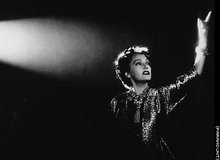



The title of my post comes from folklore scholar Jack Zipes's study of the "Red Riding Hood" tale. His book along with the more recent work of Catherine Orenstein, Little Red Hiding Hood Uncloaked: Sex, Morality and the Evolution of a Fairytale, present a fascinating look at the narrative's historical development and demonstrate the way that what originated as a coming-of-age folk tale celebrating young women's wisdom and survival skills was transformed into a blame-the-victim patriarchal morality tale.
That this "innocent" children's story is a coded lesson on sexuality is made obvious by looking at the illustrations that have accompanied the myriad re-tellings and versions of the story. For every realistic (yet talking!) wolf, there are an equal number of pictures like those in the gallery above which not only pose Mr. Wolf on two legs, but dress him in, often suave and stylish, human clothes. The big bad wolf is clearly a man, baby!
As Zipes writes, the "little red" narrative had its beginning in the oral folk traditions of Europe. Folklorists note its links to several common forms of folk tales: warning tales, problem-solving tales, and coming-of-age stories. The first two featured child protagonists who negotiate or overcome some difficulty. These taught children specific lessons about safety as well as demonstrating that children could successfully look after themselves. The third kind, the coming-of-age story celebrated the adult male and female roles children would eventually assume. They allude symbolically to adult occupations and employ narratives structured around the replacement of an old person by a younger one.
Folklorists have recreated the oral tale that gave rise to "Little Red Riding Hood." "The Story of the Grandmother" retains a recognizable outline, but with some significant differences. In the ur-version the girl is not disobedient but merely curious. She's not been given any instructions other than to deliver food to her grandmother, so there's nothing "wrong" with stopping to chat with a talking wolf. While the wolf tricks her, she also tricks him. She uses her wits and saves herself with a humorous ruse: she tells the wolf she won't taste good, he should wait until she's relieved herself before he eats her. When he lets her go to the outhouse with a string tied around her ankle, she slips it off, ties it around a tree stump, and leaves the wolf to keep calling out, "Hey, are you done yet?"
Grandma dies, but granddaughter lives on. And there is no red hood.
The first written version, and the one which created the story's moralistic template is Charles Perrault's 1697, "Little Red Riding Hood." A tale about a capable young woman here becomes the story of a vain, spoiled, disobedient brat who gets what she deserves. It is Perrault who adds the iconic red hood, a gift from a doting grandmother to a "pretty child." The red hood has a double symbolism: the colour of scandal and blood, it suggests her sin and foreshadows her fate. And hood, or chaperon, already had the meaning in French, as it does in English today, of one who guards a girls' virtue.
Perrault's mother explicitly lectures her daughter to not stray from the path, not stop and look at flowers, not talk to strangers. Instead, she disobeys on all counts. She idles, gossips and is seduced by the sensuous delights of the forest, both flowers and wolf. For her transgressions she is punished with death. As if the plot were not explicit enough, Perrault adds a postscript spelling out that his is a story about what happens to girls who let young men take liberties:
"One sees here that pretty, well brought-up young girls should never listen to anyone who happens by, and if this occurs it is not so strange that a wolf should eat them. I say "wolf," but all wolves are not of the same kind. There are some who are pleasant and follow young ladies right into their homes, right into their beds." Orenstein points out that Perrault is playing on French slang for a girl's loss of virginity: elle avoit vû le loup---she’d seen the wolf.
Later, the Brothers Grimm publish a variation, "Little Red Cap," in 1812 with one important change. While Grandma still perishes, a fatherly woodsman both rescues Red and delivers a stern lecture: "a little maid should be afraid to do other than her mother told her." As Zipes writes, "Its quite evident the Riding Hood can be 'daddy's darling' only if she learns to toe the line."
With Perrault and the Brothers Grimm the "classic" plot is in place. Little Red Riding hood is vain, silly and helpless, to blame for her own "rape" and dependent on male authority for rescue.






















































